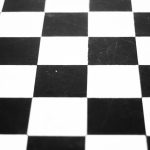Description
The evolution of three-dimensional (3D) technology has transformed the landscape of various industries, from manufacturing to healthcare, and even entertainment. The term “3D Result Today” encapsulates the current state of this technology, highlighting its applications, advancements, and the profound impact it has on our daily lives. As we delve into the intricacies of 3D technology, it becomes evident that its significance extends far beyond mere aesthetics; it is a driving force behind innovation and efficiency in numerous sectors.
At its core, 3D technology encompasses a range of processes that create three-dimensional objects from digital models. This includes 3D modeling, rendering, and printing, each contributing to the realization of complex designs and prototypes. The ability to visualize and manipulate objects in a three-dimensional space has revolutionized how designers and engineers approach problem-solving.
Today, 3D technology is not just a tool for artists or engineers; it has become an integral part of product development cycles, allowing for rapid prototyping and iterative design processes that were previously unimaginable.
Key Takeaways
- 3D Result Today is revolutionizing industries with its advanced technology and capabilities.
- New developments in 3D technology are pushing the boundaries of what is possible in various industries.
- The impact of 3D Result Today is being felt across industries such as healthcare, automotive, and aerospace, leading to increased efficiency and innovation.
- Advancements in 3D printing are enabling the creation of complex and customizable products with greater speed and precision.
- The future prospects of 3D Result Today are promising, with potential for further advancements and widespread adoption across industries.
New Developments in 3D Technology
Enhancing User Engagement
Companies are increasingly utilizing AR and VR to enhance user engagement, allowing customers to interact with products in a virtual space before making a purchase. For instance, furniture retailers now offer AR applications that enable customers to visualize how a piece of furniture would look in their home environment, effectively bridging the gap between online shopping and physical experience.
Smarter Design Processes
The integration of artificial intelligence (AI) with 3D technology is paving the way for smarter design processes. AI algorithms can analyze vast amounts of data to optimize designs for functionality and manufacturability.
Accelerating Design and Enhancing Quality
This synergy between AI and 3D modeling not only accelerates the design phase but also enhances the quality of the final product. For example, in the automotive industry, AI-driven simulations can predict how a new car design will perform under various conditions, allowing engineers to make informed decisions early in the development process.
Impact of 3D Result Today on Various Industries

The impact of 3D technology is felt across a multitude of industries, each harnessing its capabilities to improve efficiency and innovation. In healthcare, for instance, 3D printing has revolutionized the way medical professionals approach patient care. Surgeons can now create patient-specific anatomical models based on imaging data, allowing for more precise preoperative planning.
This personalized approach not only enhances surgical outcomes but also reduces recovery times, as procedures can be tailored to the unique needs of each patient. In the realm of manufacturing, 3D technology has ushered in a new era of production known as additive manufacturing. This method allows for the creation of complex geometries that traditional subtractive manufacturing techniques cannot achieve.
Industries such as aerospace and automotive are leveraging this capability to produce lightweight components that improve fuel efficiency without compromising strength. For example, companies like Boeing have adopted 3D printing to manufacture parts for their aircraft, resulting in significant weight reductions and cost savings.
Advancements in 3D Printing
| Year | Number of 3D Printers Sold | Market Size (in billion USD) |
|---|---|---|
| 2016 | 278,000 | 4.1 |
| 2017 | 456,000 | 7.3 |
| 2018 | 528,952 | 9.3 |
| 2019 | 621,000 | 11.8 |
| 2020 | 729,000 | 13.7 |
The field of 3D printing has seen exponential growth in recent years, driven by technological advancements and increased accessibility. One notable trend is the development of new materials that expand the possibilities of what can be printed. Innovations in biocompatible materials have opened doors for applications in medicine, such as creating custom implants or prosthetics tailored to individual patients.
These advancements not only enhance patient comfort but also improve the overall success rates of medical procedures. Additionally, advancements in multi-material printing have enabled the creation of complex structures with varying properties within a single print job. This capability allows designers to produce objects that combine different functionalities—such as flexibility and rigidity—within one cohesive unit.
For instance, in the fashion industry, designers are experimenting with multi-material 3D printing to create garments that incorporate both soft fabrics and rigid elements, pushing the boundaries of traditional fashion design.
Future Prospects of 3D Result Today
Looking ahead, the future prospects of 3D technology are incredibly promising. As research continues to push the boundaries of what is possible, we can expect to see even more sophisticated applications emerge across various sectors. One area poised for significant growth is the construction industry, where 3D printing is being explored as a method for building entire structures.
This approach not only reduces construction time but also minimizes waste, aligning with sustainable building practices. Furthermore, as consumer demand for customization increases, 3D technology will likely play a pivotal role in enabling mass customization across industries.
Businesses will be able to offer personalized products at scale without incurring prohibitive costs associated with traditional manufacturing methods. For example, companies in the footwear industry are beginning to adopt 3D printing techniques that allow customers to design their own shoes based on individual preferences for fit and style. This shift towards personalization will redefine consumer experiences and expectations in the marketplace.
Conclusion and Implications for the Future

The Shift in Creativity and Problem-Solving
As we continue to explore the capabilities of 3D technology, it becomes clear that this technology is not merely a trend but a fundamental shift in how we approach creativity and problem-solving across various domains. The integration of AI, new materials, and innovative applications will undoubtedly shape the future landscape of industries ranging from healthcare to construction.
Embracing the Technological Revolution
As we stand on the brink of this technological revolution, it is essential for businesses and individuals alike to embrace these advancements and adapt to the changing landscape. The potential for increased efficiency, reduced costs, and enhanced customization presents an exciting opportunity for innovation.
Responsibly Navigating the Future
However, it also necessitates a commitment to ethical considerations surrounding production practices and sustainability. The future of 3D technology holds immense promise; it is up to us to harness its potential responsibly and creatively as we navigate this new frontier.
If you’re a fan of 3D gaming, you might be interested in checking out the article on Super Mario Run. This popular game brings the classic Mario experience to mobile devices in a fun and engaging way. Another related article you might enjoy is Mario Kart Tour, which takes the beloved racing franchise to new heights with stunning graphics and exciting gameplay. And if you’re into photography, you might want to explore PIP Camera – Editor de Fotos, a photo editing app that allows you to create stunning images with a variety of effects and filters.
FAQs
What is a 3D result?
A 3D result refers to the outcome of a 3D lottery game, where players choose a three-digit number and win prizes based on matching the drawn numbers.
How is a 3D result determined?
A 3D result is determined by drawing three numbers from 0 to 9, and players win prizes based on matching the drawn numbers in the exact order or any order.
Where can I find the 3D result today?
You can find the 3D result today by checking the official website of the lottery company, visiting authorized lottery outlets, or checking local newspapers for the published results.
What are the prizes for the 3D result today?
The prizes for the 3D result today vary depending on the lottery company and the specific game rules, but typically include different prize tiers for matching numbers in different orders.
How often are 3D results drawn?
3D results are typically drawn daily, with some lottery companies offering multiple draws per day to give players more chances to win.





